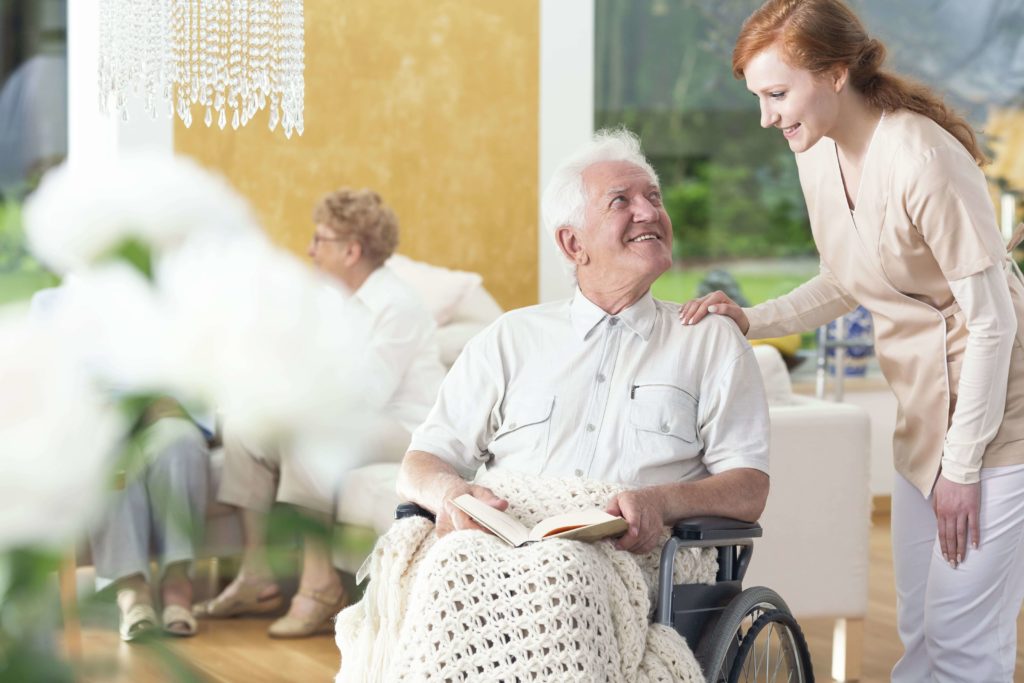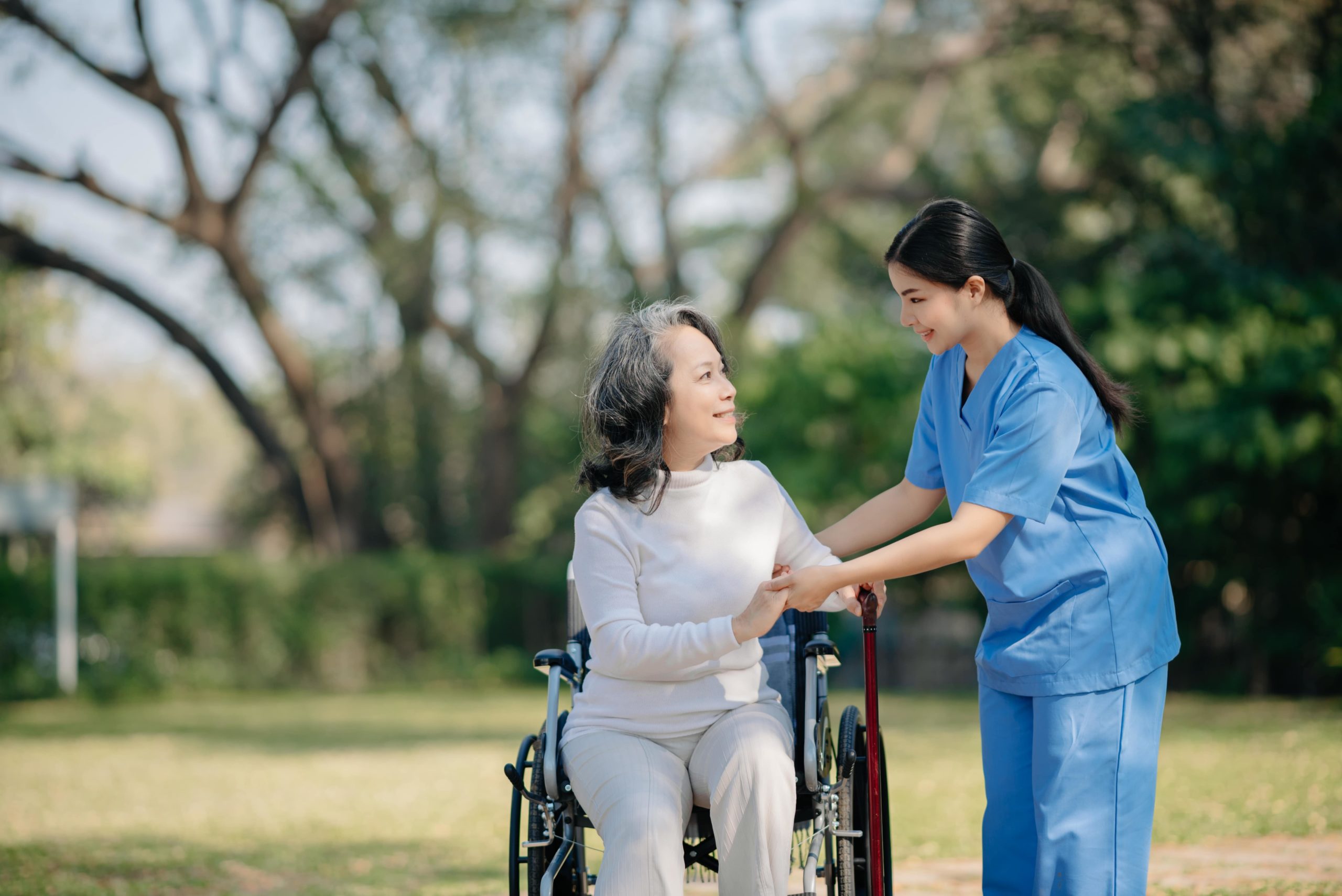The primary distinction between Personal Care and Companion Care is that a caregiver visiting a patient who requires Personal Care will be responsible for what is known in nursing terminology as (Independent Activities of Daily Living) and (Activities of Daily Living) (Instrumental Activities of Daily Living). To live independently without the support of another person, older individuals must be able to manage ADLs and IADLs.
On the other hand, companion care is the companionship and emotional support provided to seniors who are mainly healthy to live freely and with a higher quality of life at home.
Personal Care
As humans, we also respect our privacy and dignity. And it can be challenging for us as we get older and cannot execute the day-to-day activities we once did. These are frequently the duties for which we do not want to request the help of others, particularly family members.
That is the purpose of personal care. In addition to essential medical services, personal care provides hands-on care and all that companion care does.
Unlike companion caregivers, personal carers are obliged to have official training. For example, at Sonas Home Health Care, all our caregivers are either Certified Nursing Assistants (CNAs) or Home Health Aides (HHAs).
Instrumental Activities of Daily Living (IADLs)
IADLs are the activities we learned as we grew older. They are also necessary for functioning in society and living a healthy, independent life. Still, a person who cannot perform them is not in immediate danger of dying, being injured, or becoming ill.
IADLs include, among other things, managing finances, driving to appointments, buying groceries, making meals, cleaning the house, handling communications (phone, mail), and managing medications. As a result, people who cannot complete their Instrumental Activities of Daily Living require support, even though they can function independently and be alone for a short time if these are met.
Activities of Daily Living (ADLs)
For example, feeding, toileting, bathing, walking, dressing and changing clothes, grooming, and transferring are ADLs (moving from the bed to a chair). Patients who cannot undertake Activities of Daily Living independently cannot function on their caregiver. They require continual presence, and leaving them alone puts them in danger.
The Different Levels of Personal Care
ADLs and IADLs are not just yes or no questions. There are several levels of necessity. A person with Alzheimer’s, for example, may have difficulty remembering things. May merely require reminders or someone to assist them with the duties. As Alzheimer’s disease progresses, continual support with ADLs becomes necessary. Due to severe injuries, other patients undergoing rehabilitation may also require complete help, with an assistant always at their side, to ensure safety and avoid mishaps.
ADLs and IADLs are best conducted by someone who has undergone specialized training, such as Caregivers: CNAs, Personal Care Assistants (PCA) (PCAs). Aside from these certificates, Home Helpers assigns caregivers competent in performing these activities to clients who require them. Our clients may rest easy knowing that we have their backs. Knowing that the caregiver has been trained, has the necessary experience, and can assist your loved one safely and dependably.
The amount of personal care a person requires is defined by how many ADLs and IADLs they require and how much assistance they require for each of them. Assessing the degree of care needed assists us in determining who the best caregiver for each patient is. Some ADLs, for example, necessitate the presence of a strong someone with an aggressive attitude. IADLs may require the assistance of a caregiver who can multitask while maintaining attention to detail.
Companion Care
Companion care is emotional assistance and companionship provided to healthy seniors who prefer to stay home. Companion care is recommended when an older adult suffers from loneliness, apathy, a lack of ambition, and is in danger of depression. It could also help them improve their overall quality of life.
A Companion Care caregiver will spend time with the patients, talk to them, and engage in activities. Drawing, painting, sewing, gardening, playing cards, going for walks, arranging family photographs, organizing closets, and so on. It all relies on the patient’s primary interests. The goal is to keep them interested and satisfied by doing things they enjoy.
Companion care may appear simpler than personal care, yet it necessitates a very distinct mentality. The Companion Caregiver must be pleasant, happy, engaged, and very active.
Companion Care demands are frequently combined with some level of personal care needs, most notably IADLs. For example, the caregiver may prepare breakfast, take the patient to the Senior Center for exercise and sociability, remind the patient about medicines, make the bed, purchase groceries, cook a meal, watch an old movie together, and build a puzzle with them, among other things alternating companionship and IADLs throughout the day.
Why is it important?
Companion care is emotional assistance and companionship provided to healthy seniors who prefer to stay home. Companion care is recommended when an older adult suffers from loneliness, apathy, a lack of ambition, and is in danger of depression. It could also help them improve their overall quality of life.
A Companion Care caregiver will spend time with the patients, talk to them, and engage in activities. Drawing, painting, sewing, gardening, playing cards, going for walks, arranging family photographs, organizing closets, and so on. It all relies on the patient’s primary interests. The goal is to keep them interested and satisfied by doing things they enjoy.
Companion care may appear simpler than personal care, yet it necessitates a very distinct mentality. The Companion Caregiver must be pleasant, happy, engaged, and very active.
Companion Care demands are frequently combined with some level of personal care needs, most notably IADLs. For example, the caregiver may prepare breakfast, take the patient to exercise and socialize, remind the patient about medicine, make the bed, purchase groceries, cook dinner, watch an old movie, and create a puzzle with the patient, all at the same time alternating companionship and IADLs throughout the day.
The Take-Away
Knowing the difference between companion care and personal help, you can choose what kind of care you or a loved one requires.
Companion care offers companionship as well as non-medical assistance.
All the services of companion care and necessary medical treatments are provided by personal care.
If your loved one or you need care, don’t hesitate to get in touch with Vitality Home Health. If considering home care services like personal or companion care, contact Vitality Home Health. We are devoted to bringing light, love, and fun into the homes and communities we serve via our home care services.




